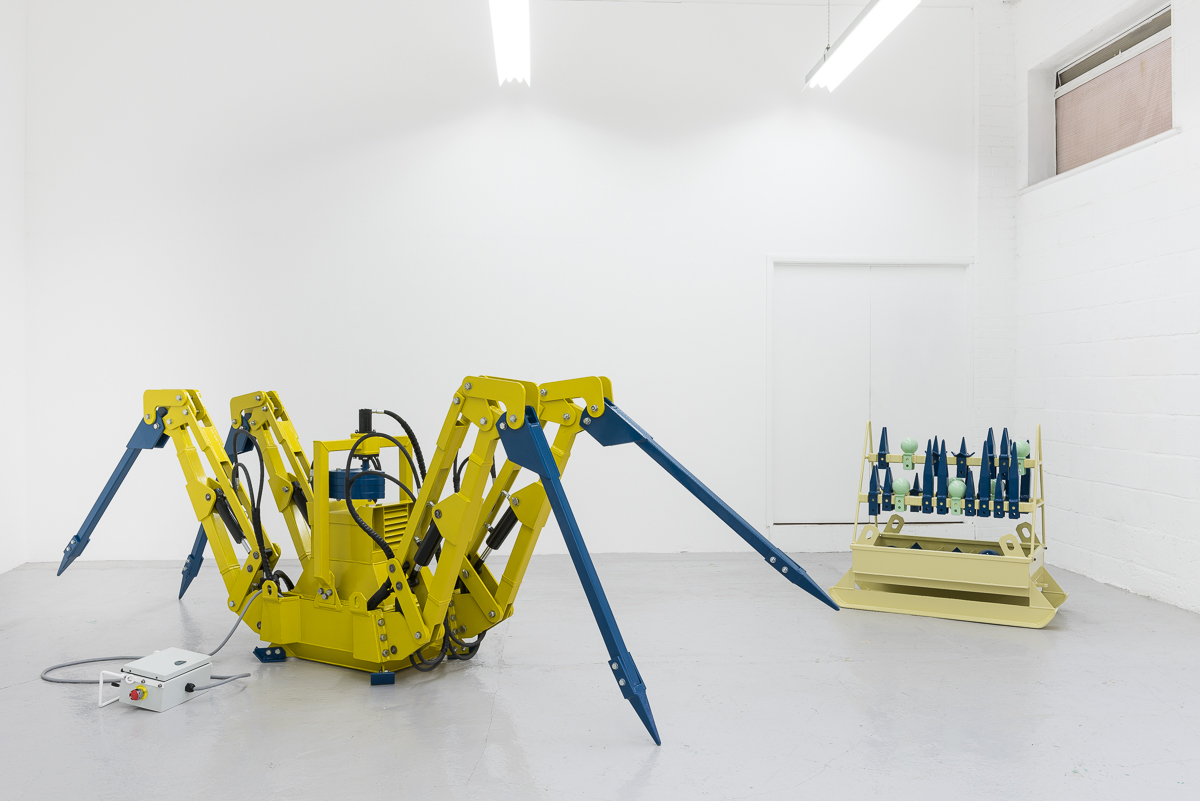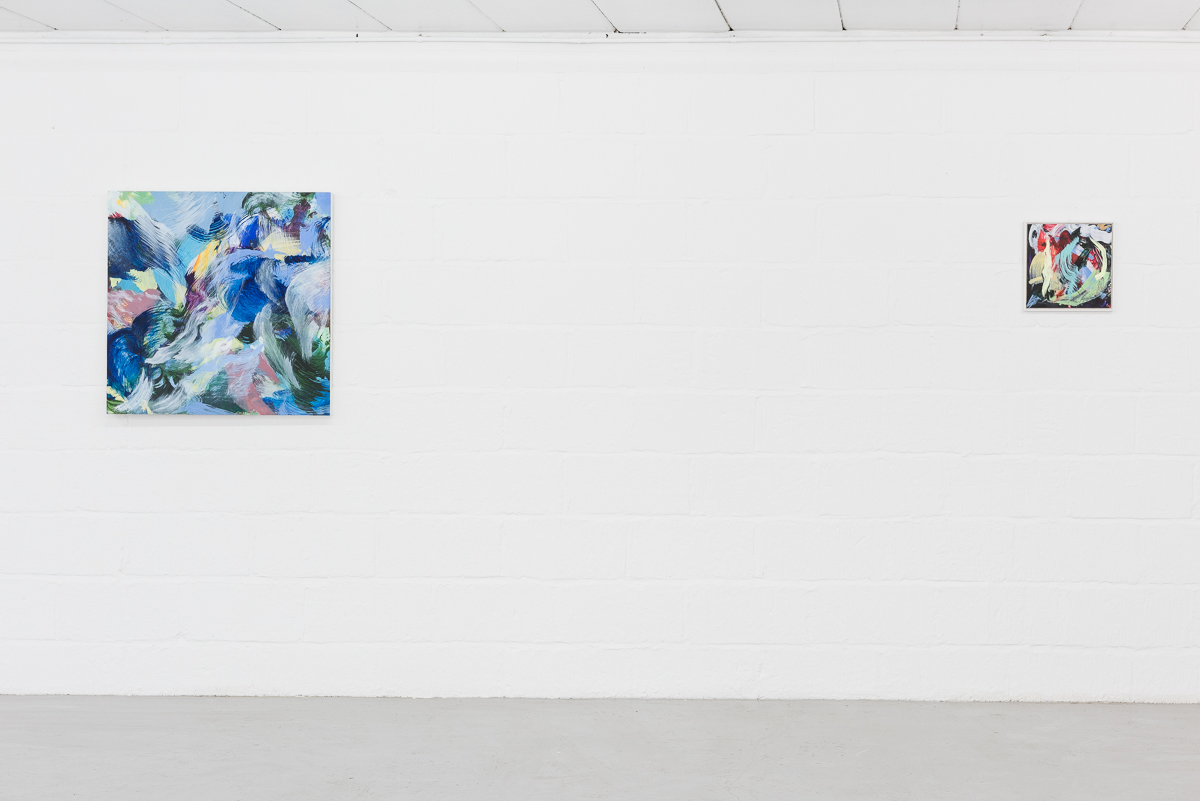Rebecca Pelly-Fry/Griffin Gallery

"Art is in my bones, and always has been"
Our interview with Rebecca Pelly-Fry, Head Curator at Griffin Gallery.
Could you talk about your background? What made you become a gallery owner, is it something you have always wanted to do?
Art is in my bones, and always has been. I studied Fine Art at university, with every intention of becoming an artist, and continued to practice for about 7 years after graduating. I always worked full time, though, and as my career progressed it started to take over from my art practice. The beginning of my gallery career was at a commercial gallery in Newcastle called The Biscuit Factory, where I worked as Gallery Manager and Curator for about 3 years.
The next opportunity after that was an arts management role in a small arts development charity in Durham, where I was working more across art forms (dance, drama, literature, visual arts and music), and that continued when I moved to London. At that point I had stopped making art completely, and was focussing on developing my skills and experience in arts management through two different roles within Local Authority – first at Kensington & Chelsea, and then Camden. After delivering the Cultural Olympiad programme for Camden in 2012, I was offered the opportunity to take on Directorship of Griffin Gallery, which was an absolute dream come true. I’d always wanted to run my own gallery space, and this gave me the opportunity to do just that but with the financial and structural support of Colart behind me.
Pool: installation view, 2016
Pool: installation view, 2016
Could you talk about the space you have near Shepherds Bush (London) and the journey that got you there?
The space was developed on the ground floor of Colart’s new headquarters when they moved from the old Winsor & Newton factory in Harrow in 2011/12. The idea was to establish more of a direct connection with the artistic community through an exhibition and residency programme, and signified a big shift in the company’s operational structure, from B to B (business to business) to B to C (business to consumer). This shift is still underway, and the gallery has played a key role in helping turn the ship. Over the past 4 years we have developed a strong programme consisting of 6 exhibitions a year and 4 different types of residency opportunity. We focus on supporting and exhibiting emerging to mid-career artists, and our particular interest is working with artists who demonstrate both deep engagement with materials and conceptual rigour within their practice.
What has been your biggest obstacle and greatest achievement as a gallery owner?
I think the biggest obstacle, or challenge shall we say, has been turning Griffin Gallery into a destination. We are located in a part of town that doesn’t have any passing foot traffic, and is not near to any other arts organisations or galleries, so we have had to work hard to encourage people to come and see what we’re doing here. So, in relation to this I guess my greatest achievement has been succeeding! We now consistently have around 200 people at our private views, and we are generally known and respected within the contemporary art scene in London, and just beginning to establish an international reputation too. To take a completely unknown space from nothing to this in four years feels like a huge achievement, and I am immensely proud of what we’ve done so far.
Zsofia Schweger (winner of Griffin Art prize 2015), ‘BLOC’ solo show
How do you feel the art world is changing? Do you think art fairs are becoming the lifeblood for most galleries?
The art world is always changing. At the moment (although maybe it’s always been this way), I feel that the top end is dominated by a handful of people and artists that continually circulate around – you tend to see a lot of the same work at the big art fairs all over the world. The real positive to be taken from ever-increasing globalisation is that I am able to connect with exciting artists from all over the world, and artists are able to show their work in a much broader context than where they happen to live. My interest lies in the places where artists are making, curators are generating useful and interesting conversations, and sales take place where there is genuine interest in the work. Art fairs are certainly a useful place to get exposure, and to meet a large number of people, collectors, curators and art consultants all in one place. But most of the galleries I speak to see them as marketing opportunities, first and foremost. Sales can vary enormously and it is always a big financial risk to attend a fair, which is why we haven’t yet ventured down that road. For me, the most interesting thing happening at the moment is the breaking down of barriers between art-forms, where we are seeing ever-increasing creative collaborations between artists, designers, engineers and scientists. Those moments of creative inspiration, generated by bright and interesting people, are where life begins to make sense and where we can see what the future might look like. They bring hope in a dark and confusing world.
The Griffin Art Prize is notorious for selecting great emerging talent, could you tell us about the art prize and how it started?
Thank you! Very kind of you to say so. The prize was one of the first activities set up by Colart when they opened the space, so it was already running when I arrived in early 2013. It was established in 2012 to offer one outstanding emerging artist each year a significant opportunity to develop their practice. Until this year, the prize on offer was a six-month residency, with all art materials provided, culminating in a solo show at Griffin Gallery. This year we have changed the prize to a 3 month residency, offered with accommodation, materials and a mentorship programme and culminating in an open studio event. We made the changes for a few reasons, namely to remove the unnecessary pressure of the solo show which turned out to be quite stressful for all involved. Instead, we want to ensure the winning artist has the best opportunity to develop their practice and explore the use of materials while they are with us, without undue stresses or expectations. Each year the calibre of applicants increases and this year we had a record number of applications, which tells us we must be doing something right!
The Griffin Art Prize, installation shots, 2016
Perfectionism (part iii): The Alchemy of Making installation view, 2016
Perfectionism (part iii): The Alchemy of Making installation view, 2016
How do you differentiate yourself from other galleries?
We are different to other galleries in our set-up and structure, in that we are neither publicly funded nor commercially driven, which allows us to do things differently. The fact that we are owned and entirely funded by an international art materials manufacturer also gives us a unique position as a place to talk about materiality within contemporary art. Colart is a leader in innovation within the industry, through its brands (Winsor & Newton, Liquitex and Lefranc Bourgeois) and also wants to stay ahead of the game in terms of how artists’ use of materials is changing. Griffin Gallery is the platform for exploring and understanding what is happening at the forefront of artistic production, and that feeds back into the industry as much as it connects with the artistic community.
What advice can you give to young artists?
A few words of wisdom – we are in an ever-changing world, now dominated by big business, big data and big systems. The more you, as an artist and as a human, can consider the impact of your decisions on the world around you, the more you will contribute towards a stronger and more sustainable future. Personally, I believe the creative sector has the ability and sensitivity to take humanity to a place of greater understanding and symbiosis with the planet, and we should not take this responsibility lightly. I implore all young artists to take up this responsibility and to commit their whole being to the next steps they take. You cannot fail if you have clear and pure intentions.
Zsofia Schweger (winner of Griffin Art prize 2015), ‘BLOC’ solo show
Rebecca Pelly-Fry, Head Curator
What do you look for in an artist?
Commitment, clarity, professionalism and an absolute line of intention. A good personality match is also important, as working together on an exhibition or residency is quite an intense experience so the better you gel with the people involved, the easier the process for everyone. I have many friends I have met through my work, and that means it doesn’t really feel like work at all.
What's the future for Griffin Gallery? Any exciting new shows lined up?
Over the next couple of years, we want to develop the residency programme even further. It has been fantastically successful so far, and we want to do more. Next year’s exhibition programme is also looking very exciting – I am co-curating a group show in the spring called Architecture As Metaphor, with the artist Steve Johnson, which includes work from some incredible artists and heroes of mine such as Phyllida Barlow, Richard Wentworth, Tony Bevan and Richard Deacon. We are also absolutely delighted to announce a unique solo show by the acclaimed sculptor, David Mach RA, who will be creating a spectacular installation for the space in May/June 2017.
Publish date: 25/11/16
All images courtesy of Griffin Gallery





